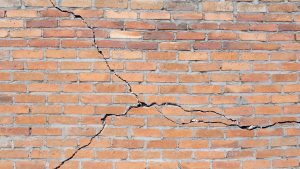Common Concrete Foundation Problems and Their Repair Solutions
As a homeowner, you know that a solid foundation is the key to a stable and structurally sound house. But what happens when your concrete foundation starts showing signs of trouble? Cracks, settling, and moisture issues are all common problems plaguing homeowners.
This blog post explores some of the most common concrete foundation problems and their repair solutions. From minor cracks to more serious structural issues, we’ll discuss their causes and how they can be fixed. So if you’ve noticed any signs of foundation trouble in your home, keep reading to learn what steps you can take to address them and ensure the long-term stability of your property.
Cracks in the foundation
One of the most common foundation problems is the development of cracks, which can be caused by various factors such as soil movement, temperature changes, or improper concrete curing. It is essential to identify the type and severity of the crack before proceeding with repairs. Start by cleaning the damage and removing any loose material to ensure proper adhesion of the repair material. Then, fill the crack with an appropriate sealant, such as epoxy or polyurethane-based products, that can effectively expand and contract with the foundation.
This will prevent water infiltration and provide structural reinforcement to the cracked area. Regularly monitoring the crack for any signs of further movement and addressing it promptly can help mitigate potential future problems. Remember, for large or complex cracks. It is best to consult a professional for a thorough evaluation and appropriate repair strategy.

Foundation settlement
Foundation settlement is a common issue when the soil beneath the foundation compresses, causing the foundation to sink unevenly. This can result from factors such as poor soil compaction during construction, changes in soil moisture content, or the natural settling of the soil over time. To repair foundation settlement, it is crucial to determine the underlying cause.
A professional assessment by a structural engineer or foundation repair specialist can help identify the specific factors contributing to the settlement. Once the cause is determined, foundation underpinning methods can be employed to stabilize the foundation and prevent further compromise. Standard underpinning techniques include helical piers, which are screwed into the ground to reach stable soil layers, and concrete pilings, which provide additional support by transferring the load to deeper, more stable soil.
These methods effectively redistribute the weight of the foundation, ensuring its stability and preventing future settlement issues. It is essential to consult with a qualified professional to determine the most suitable underpinning solution based on the settlement’s specific soil conditions and severity. By promptly addressing foundation settlement, you can protect your home from structural damage and maintain its integrity.
Uneven foundation
An uneven foundation can cause issues like cracked walls, doors, windows, and uneven floors. To maintain your home’s structural integrity and create an even surface, it’s crucial to address this problem. Start by evaluating the unevenness using a laser level or observing changes in floor elevation. Once you’ve identified the areas needing attention, consider options like slab or mud jacking. These techniques involve injecting cement, sand, and additives to raise the sunken portions and restore a level foundation. Adequate compaction of the injected material will stabilize the foundation and prevent further sinking.
It’s also essential to address the underlying cause of the unevenness, such as poor soil compaction or inadequate drainage. Seeking guidance from a professional specializing in foundation repair will provide a comprehensive assessment and a tailored repair plan for your specific circumstances. Promptly addressing an uneven foundation will restore stability and functionality to your home’s structure.
Bowing or leaning walls
Bowing or leaning walls indicate a significant foundation problem that should be addressed promptly to prevent further structural damage. These issues can arise due to excess lateral pressure from the surrounding soil, hydrostatic pressure from water buildup, or inadequate reinforcement during construction. To repair bowing or leaning walls, it is essential to alleviate the stress on the walls first. Temporary supports can be installed to stabilize the affected areas during the repair process.
To restore wall integrity, reinforcement is essential. Use carbon fiber strips or steel braces for this purpose. Carbon fiber strips are lightweight and prevent bowing. Steel braces are installed against the wall and anchored to stable soil or footings. In severe cases or when other methods fail, excavation and replacement may be needed. Consult a professional for assessment and suitable repair techniques. Timely repairs ensure foundation stability and home safety.
Water damage and moisture infiltration
Water damage and moisture infiltration can harm a concrete foundation, leading to cracks, deterioration, and compromised structural integrity. It is crucial to address the source of water intrusion and implement effective repair solutions. Begin by identifying the potential causes, such as poor drainage, plumbing leaks, or cracks in the foundation. Repair any visible cracks in the foundation by cleaning them thoroughly and filling them with an appropriate sealant, such as epoxy or polyurethane-based products. This will prevent water from seeping into the foundation.
To protect your foundation from moisture, apply a waterproofing membrane and improve drainage. Installing a French drain system and maintaining landscaping and gutters can also help. Promptly addressing water damage is crucial for maintaining structural integrity. Consult a professional for assistance in diagnosing and repairing water intrusion.
Concrete spalling or deterioration
Concrete spalling, characterized by the chipping, flaking, or crumbling of the concrete surface, is often caused by freeze-thaw cycles, exposure to harsh chemicals, or poor concrete mix design. It is crucial to address concrete spalling promptly to prevent further deterioration and potential structural issues. Repair starts by removing loose or damaged concrete using chipping hammers, grinders, or pressure washing. Ensure that the surface is clean and free from debris before proceeding. Next, repair the damaged areas with a high-quality concrete patching material designed explicitly for spalling repairs. Follow the manufacturer’s instructions for mixing and application, and ensure proper adhesion to the existing concrete surface.
Once the repairs are complete, consider applying a protective coating or sealer to the entire foundation. This will help prevent future deterioration by providing a barrier against moisture, chemicals, and environmental factors. Regular inspections and maintenance of the foundation will also help identify and address any signs of spalling or deterioration in its early stages. Remember, for extensive or structural damage, it is advisable to consult with a professional concrete contractor or structural engineer to ensure proper repair techniques and solutions are implemented. Taking proactive steps to repair concrete spalling will help preserve the integrity and longevity of your foundation.
Foundation heaving
Foundation heaving is another prevalent foundation problem that occurs when the soil expands, typically due to factors like expansive clay soil or frost action during freezing temperatures. As the ground swells, it exerts upward pressure on the foundation, causing it to heave or lift unevenly. To effectively repair foundation heaving, addressing the root cause of soil expansion is crucial. Proper drainage solutions can help manage water content in the soil, reducing the risk of expansive clay soil-related heaving. Installing gutters and downspouts to direct water away from the foundation and grading the soil away from the house can prevent excessive moisture accumulation.
Additionally, incorporating moisture barriers, like impermeable membranes or clay liners, can help limit water infiltration into the soil and reduce the potential for frost-related heaving. If foundation heaving has already occurred, installing piers or helical anchors can provide the necessary stabilization. These underpinning solutions reach stable soil layers, bypassing the affected expansive soil and supporting the foundation. Addressing foundation heaving promptly can prevent further structural damage, ensuring your home’s long-term stability and safety.
Crumbling or deteriorating foundation
A crumbling or deteriorating foundation can threaten your home’s structural integrity. Poor construction practices, harsh weather, or low-quality materials can cause this problem. To prevent further damage, assess the extent of deterioration and its underlying cause. A professional structural engineer can help with evaluation and repair recommendations. Minor cracks can be fixed with high-quality concrete patching compounds, but severe deterioration may require more extensive measures. Experienced contractors should handle foundation replacement, ensuring proper excavation, reinforcement, and pouring of new concrete. Promptly addressing foundation issues and using professional repair methods will protect your home’s stability and prevent future deterioration.
How Professionals in Rhode Island Provide Assistance
In Rhode Island, professionals offering foundation repair assistance play a critical role in safeguarding homes and buildings from the unique challenges posed by the state’s geographical and environmental conditions. Rhode Island is susceptible to coastal erosion, frequent precipitation, and varying soil types, making foundation issues more prevalent. Here’s how professionals in Rhode Island provide specialized assistance:

Coastal Erosion Awareness
Professionals in Rhode Island are well-aware of the impact of coastal erosion on foundations, especially for properties near the coastline. They employ specific techniques and materials to counteract the effects of erosion and implement solutions that protect against saltwater intrusion, which can weaken foundations.
Soil and Water Management
The soil conditions in Rhode Island can vary significantly, with some areas having expansive soils that can lead to foundation movement and settlement. Professionals understand the importance of proper soil analysis and stabilization techniques to mitigate potential problems. They also focus on efficient water management solutions, like French drains and grading improvements, to prevent water accumulation near the foundation.
Foundation Waterproofing
Given Rhode Island’s relatively high precipitation levels, waterproofing is crucial to foundation repair. Professionals use advanced waterproofing membranes and coatings to protect foundations from water intrusion and moisture-related issues.
Historical Building Expertise
Rhode Island boasts a rich historical architectural heritage. When dealing with foundation repairs in historic buildings, professionals must adhere to preservation guidelines and use compatible materials and restoration methods to maintain the integrity of these structures.
Local Building Codes and Regulations
Foundation repair professionals in Rhode Island are well-versed in the state’s building codes and regulations. They ensure that repair work complies with these standards, securing the safety and structural integrity of the property.
Collaboration with Structural Engineers
Professionals collaborate with experienced structural engineers for complex foundation issues to conduct detailed assessments and design appropriate repair strategies. This ensures that the repairs are comprehensive and suitable for each specific case.
Community-Centric Approach
Local professionals often prioritize building lasting relationships with the community. They provide personalized customer service and follow-up support to ensure homeowners feel confident in the longevity and effectiveness of the foundation repairs.
Conclusion
In conclusion, if you face any concrete foundation problems, Rhode Island Repair in Johnston, RI, is here to help. Our team of experts specializes in providing effective and long-lasting solutions for all your foundation needs. We have the knowledge and expertise to fix it whether it’s cracked, settling, or water damage. Don’t let these issues worsen over time. Contact us today, and let us ensure a strong and stable foundation for your property—Trust Rhode Island Repair for all your concrete foundation repair solutions for all your needs. With our dedicated team and years of experience, we have earned a reputation as the go-to experts in Johnston, RI, for concrete foundation repairs.





